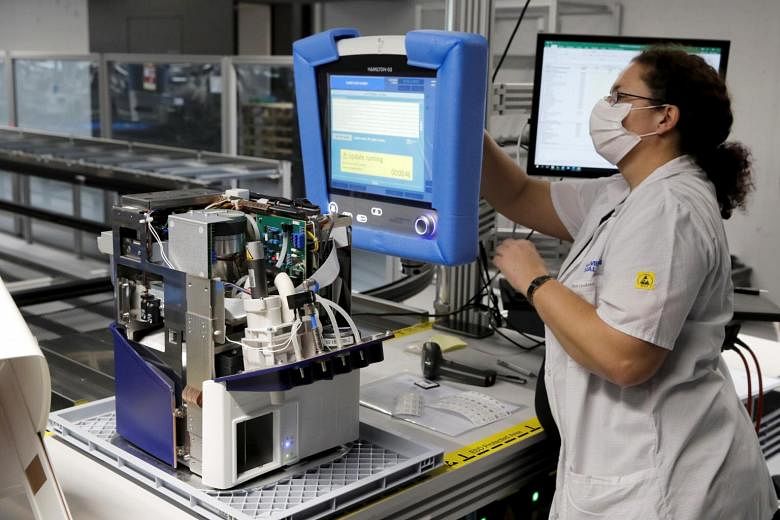NEW YORK • Hospitals and governments around the world are confronting a grim reality: There are not enough lifesaving ventilator machines, and there is no way to solve the problem before the coronavirus pandemic reaches full throttle.
Desperate hospitals say they cannot find any source to buy the medical devices, which deliver air to the lungs through a tube in the windpipe and can be the difference between life and death for those with the most dire respiratory effects of the virus. Each machine can cost as much as US$50,000 (S$72,000).
American and European manufacturers cannot speed up production enough to meet soaring demand, at least not any time soon.
Some European governments are deploying wartime-mobilisation tactics to get factories to churn out more ventilators and to stop exports of these machines.
The United States, by contrast, has been slow to develop a national strategy for accelerating the production of ventilators. This week, President Donald Trump urged governors to find ways to procure new ventilators. "Try getting it yourselves," he said.
"The reality is there is absolutely not enough," said Mr Andreas Wieland, chief executive of Hamilton Medical in Switzerland, one of the world's largest makers of ventilators. His company is shipping machines as fast as it can get them off the assembly line, but it cannot keep up with the crush of orders.
"Italy wanted to order 4,000, but there is not a chance," he said. "We sent them something like 400."
Hospitals in the US have roughly 160,000 ventilators. There are 12,700 more in the national strategic stockpile, maintained by the federal government to respond to national emergencies. That probably will not be enough if the number of serious cases keeps climbing.
The machines are complicated and made up of hundreds of smaller parts produced by companies all over the world. There is no simple way to substantially increase the output.
"Everybody making ventilators here or elsewhere is going to be looking for parts, often coming from the same suppliers," said Mr Marcus Schabacker, chief executive of ECRI, a non-profit group that evaluates medical technology. "There is a domino effect coming into play."
China, as the initial epicentre of the outbreak, snapped up whatever slack there was in the market for the assisted-breathing machines. When the disease spread to South Korea and Italy, hospitals in those countries put their orders in.
Now, manufacturers are getting inundated with orders from all over the world.
The US is towards the back of the queue, according to manufacturers. Without an adequate supply, doctors may have to make life-or-death decisions about who needs the machines most.
Ventec, a small ventilator firm with its headquarters near Seattle, recently filled an order to sell 150 ventilators to Japan, said chief executive Chris Kiple. Ventec is hustling to accelerate its production but, even with the increased production, it will not be able to quickly satisfy the surging demand.
Mr Kiple said he has even received inquiries from some wealthy individuals hoping to buy their own personal ventilators.
"I can tell you with a 100 per cent confidence that every single manufacturer is facing a backlog right now," he added.
Meanwhile, Britain said yesterday that engineering companies had come up with an emergency ventilator prototype, which should be approved for use in hospitals by the end of next week. The country has an existing stock of 5,000 to 8,000 ventilators, which is inadequate.
NYTIMES, REUTERS

